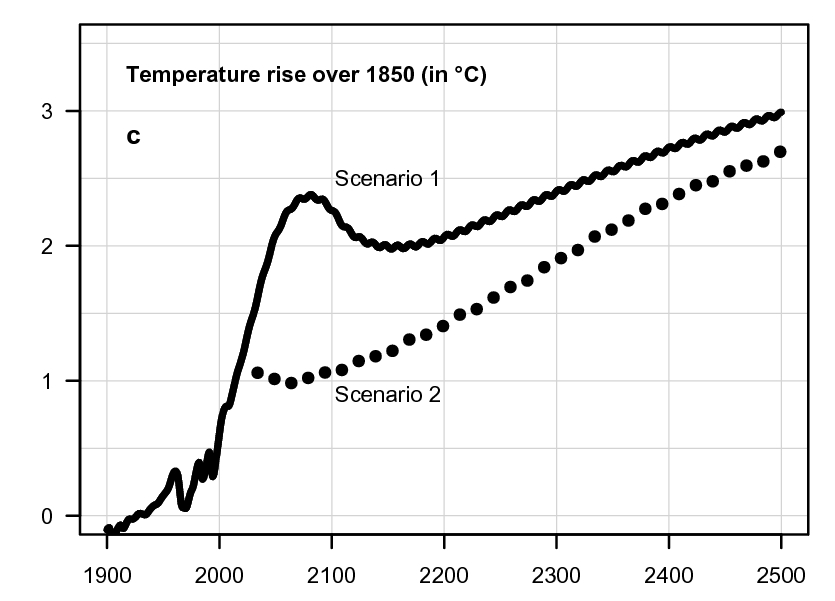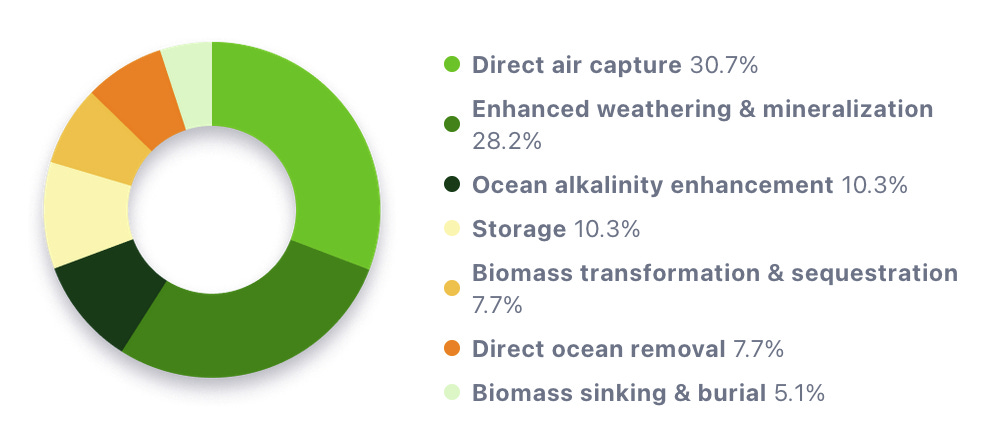Miss Hottest September Ever
"Too much change in too short a period of time” aptly describes where we find ourselves in 2023. We have already crossed thresholds, or tipping points, for three climate stability elements.
It was the best of times, it was the worst of times
—Dickens
I suppose many of us are going through the same kind of existential angst I am when I think about climate change. On the one hand, I have a granddaughter who graduates High School this year and I can remember how large the world was for me at that age—the opportunities, the possible futures, young love, the sheer exuberance of living. It is the best of times.
But then I swing back to a very dark secret—something one can’t bring up in polite company. It was the first thought I had when my son told me they were expecting a baby. What will her life be like, I wondered, in 2040, 2060, and 2090? She will reach my present age in 2082, assuming she can survive what I know is coming. Her world will not look like the General Motors Futurama of the 1939 World’s Fair, with fully autonomous cars, vertical farms for artificially produced crops, and rooftop platforms on which to park personal flying machines or land your jet pack.
It would require enormous luck for the 2082 future just to resemble as happy an outcome as the Ford pavilion of the 1964 World’s Fair, where fairgoers rode through a world of Audio-Animatronic cave-men (the exhibit became Disneyland's "Primeval World" railroad fantasy ride in 1966).
There are so many converging crises that I take comfort in recalling that I had read "The Future as a Way of Life" in Horizon magazine the summer I graduated from High School. In that piece, Alvin Toffler set out only a fraction of the changes that actually came true during my life. He labeled the phenom, “Future Shock,” by which he meant too much change in too short a period of time.
"Too much change in too short a period of time” aptly describes where we find ourselves in 2023. There is urgent public policy debate about how best to respond to the extreme weather changes that clearly show the Anthropocene having traversed planetary biogeophysical boundaries (although even that is disputed by some). We can ignore the deniers. They suffer understandably from normalcy bias, optimism bias, priming bias, confirmation bias, framing bias, anchoring bias, loss aversion, regressive conservatism (post hoc ergo propter hoc), and sick gut bacteria.
Engaging with them only impedes progress toward actual remedies.
It can be just as difficult to engage with climate believers. There are ongoing, active debates about the best solutions. There are those who believe we should throw our entire climate budget at single strategies like artificial trees or electrification. There are others who believe remediation efforts like carbon dioxide removal and solar radiation management are distracting us from the real need to end fossil carbon extraction, switch to renewable energy, and become much more efficient and less wasteful with our consumerism, ie: a circular economy or donut economics. They argue that solutions like carbon dioxide removal (whether mechanical or natural) allow polluters to keep polluting.
There are those—including reputable scientists—who say that if we just stop pumping more pollution into the atmosphere the natural decay processes of carbon dioxide, methane and the other greenhouse gases will allow earth systems time to recover. That brings me to my first chart, from Jorgen Randers and Ulrich Goluke, published in Nature November 12, 2020.
Chart Number One
Randers and Goluke show definitively that whether we get to zero emissions by the end of this century (Scenario 1) or cut to zero instantly (Scenario 2), the decay-chain drawdown effect is only transitory, a temporary decline in this century followed by a continued rise for hundreds of years thereafter. Sea level rise would be entirely unabated.
The reason that happens is best illustrated by three other charts in the same paper:
We have already crossed thresholds, or tipping points, for three climate stability elements: permafrost, albedo, and sea level rise. All of these elements are in quest of a new stasis, but that will not be reached for many centuries, possibly many millennia, or longer—millions of years. In other words, tipping elements like permafrost melt are now self-sustaining and will keep increasing until, in the case of permafrost, it runs out of ice to melt. That drops surface reflectivity and allows more solar heat to be captured each day, resulting in steadily rising surface temperature and sea level. While the albedo (reflectivity) picture may resolve in 500 years (after all glaciers are gone), the other contributing, self-sustaining, factors are just getting started and will still be undergoing acceleration long after 500 years. To envision this, the authors coded ESCIMO (“eskimo”), a system dynamics model that includes representations of the world’s atmosphere, oceans, forests (and other land types), biomass—and their interactions. Recall that some of these same authors worked on World One, an MIT computer program commissioned by the Club of Rome in 1973 to model global sustainability. (Instead, it predicted that by 2040 our civilization would end.) ESCIMO now reveals:
This warming is the combined effect of three physical processes: (1) declining surface albedo (driven by melting of the Arctic ice cover), (2) increasing amounts of water vapour in the atmosphere (driven by higher temperatures), and (3) changes in the concentrations of the GHG in the atmosphere (driven by the absorption of CO2 in biomass and oceans, and emission of carbon (CH4 and CO2) from thawing permafrost). This self-sustained, in the sense of no further GHG emissions, thawing process is a causally determined, physical process that evolves over time. It starts with the man-made warming up to the 1950s, leading to a rise in the amount of water vapour in the atmosphere—further lifting the temperature, causing increasing release of carbon from thawing permafrost, and simultaneously a decline in the surface albedo as the ice and snow covers melts. To stop the self-sustained warming in ESCIMO, enormous amounts of CO2 have to be extracted from the atmosphere.
This is a free post, because we need as many people as possible to know that adopting personal do’s or don’ts matter and there are many strategies that can help. These posts keep coming only because good people dig deep and choose the modest voluntary subscription fee options from their hearts.
Thank you!
Chart Number Two
The Copernicus Climate Change Service (C3S), implemented by the European Centre for Medium-Range Weather Forecasts on behalf of the European Commission with funding from the EU, routinely publishes monthly climate bulletins reporting on the changes observed in global surface air temperature, sea ice cover and hydrological variables. All the reported findings are based on computer-generated analyses using billions of measurements from satellites, ships, aircraft and weather stations around the world.
Here is C3S’s picture of the temperature anomaly we experienced last month:
September 2023 was the warmest September on record globally, with an average surface air temperature of 16.38°C, 0.93°C above the 1991-2020 average for September and 0.5°C above the temperature of the previous warmest September, in 2020.
September 2023 global temperature was the most anomalously warm month of any year in the ERA5 dataset (back to 1940).
The month as a whole was around 1.75°C warmer than the September average for 1850-1900, the preindustrial reference period.
The global temperature for January-September 2023 was 0.52°C higher than average, and 0.05°C higher than the equivalent period in the warmest calendar year (2016).
For January to September 2023, the global mean temperature for 2023 to date is 1.40°C higher than the preindustrial average (1850-1900).
For Europe, September 2023 was the warmest September on record, at 2.51°C higher than the 1991-2020 average, and 1.1°C higher than 2020, the previous warmest September.
The average sea surface temperature for September over 60°S–60°N reached 20.92°C, the highest on record for September and the second highest across all months, behind August 2023.
The really bad news? The El Niño phase will reach its full strength in the 1st half of 2024. How long it will last is indeterminate. Its opening stage—the first half of 2023, saw regional temperature increases of 2-3°C and globally about 1°C above the 1991-2020 average. The first half of 2024 and the Northern Summer that follows will completely eclipse that.
In the ice around Antarctica, the daily and monthly extents reached their lowest annual maxima in the satellite record in September (the end of Southern winter), with the monthly extent 9% below average. The daily Arctic sea ice extent reached its 6th lowest annual minimum in September (the end of Northern summer) while the monthly sea ice extent ranked 5th lowest, at 18% below average.
September 2023 saw wetter-than-average conditions along many parts of the western seaboard of Europe, including the western Iberian Peninsula, Ireland, northern Britain, and Scandinavia.
It was also wetter than average in Greece following extreme rainfall associated with storm Daniel; this event was also responsible for the devastating flooding in Libya.
Southern Brazil and southern Chile also experienced extreme precipitation events.
Drier-than-average regions included parts of Europe, the southeastern USA, Mexico, central Asia, and Australia, where the driest September on record was recorded.
Fires still burn across the length of Canada.
A Tale of Two Charts
July 2023 was the hottest month ever recorded in the N. Hemisphere. The month was 0.7°C warmer than the 1991-2020 average for July, and 0.33°C warmer than the previous warmest month, July 2019. While September is usually cooler than July in the Northern Hemisphere what should be more worrying is the extent of the anomaly—0.5°C more than the previous record in 2020. Last month was 0.93°C above the 1991-2020 average for September. What it appears, albeit preliminarily, is that as we get farther along into the El Niño, each record breaks its prior record by a greater margin. More scary? The Copernicus group notes that Septembers of other recent years with developing El Niño events, such as 1997 and 2015, have not been especially warm.
In July, 2023:
In Phoenix, Arizona, only the last day of the month registered a daily maximum temperature lower than 110°F (43°C).
All-time temperature records higher than 37°C were recorded close to the Arctic Circle at two sites in the Canadian Northwest Territories. It was also much warmer than average over Greenland, where the estimated extent of surface ice melt was high.
In Asia, Kazakhstan experienced heatwave conditions, China reported its highest-ever measured temperature, 52.2°C.
That is change multiplied by change—the exponential hockey stick. Can you imagine what it will be like in Phoenix or Northwest China in July, 2024? We don’t have long to wait.
I want my granddaughter to have as wonderful a life as I have had. I am confident she could have that life even if civilization as we know it (ie: consumer culture) were to disappear and we all revert to something more akin to the pastoral life described by Black Hawk at the end of the Nineteenth Century.
The land around our village, uncultivated, was covered with bluegrass, which made excellent pasture for our horses. Several fine springs broke out of the bluff nearby, from which we were supplied with good water. The rapids of Rock River furnished us with an abundance of excellent fish, and the land, being good, never failed to produce good crops of corn, beans, pumpkins, and squashes. We always had plenty — our children never cried with hunger, nor our people were ever in want. Here our village had stood for more than a hundred years….
In order to get even to that outcome, not to exclude a techno-civilizational rescue, we have to halve the production of anthropogenic greenhouse gases every 7 years for the remainder of the century while at the same time ramping up carbon dioxide removal by all the natural regenerative methods described in this space in preceding posts.
Simple as that.
Meanwhile, let’s end this war. Towns, villages, and cities in Ukraine are being bombed every day. Ecovillages and permaculture farms have organized something like an underground railroad to shelter families fleeing the cities, either on a long-term basis or temporarily, as people wait for the best moments to cross the border to a safer place or to return to their homes if that becomes possible. There are 70 sites in Ukraine and 500 around the region. As you read this, 40 Ukrainian ecovillages and 300 in Europe have given shelter to thousands of adults and children and are receiving up to 1400 persons (around 200 children) each month. We call our project “The Green Road.”
For most of the children refugees, this will be their first experience in ecovillage living. They will directly experience its wonders, skills, and safety. They may never want to go back. Those who do will carry the seeds within them of the better world they glimpsed through the eyes of a child.
Those wishing to make a tax-deductible gift can do so through Global Village Institute by going to http://PayPal.me/greenroad2022 or by directing donations to greenroad@thefarm.org.
There is more info on the Global Village Institute website at https://www.gvix.org/greenroad or you can listen to this NPR Podcast and read these recent articles in Mother Jones and The World. Thank you for your help.
The COVID-19 pandemic destroyed lives, livelihoods, and economies. But it has not slowed climate change, a juggernaut threat to all life, humans included. We had a trial run at emergency problem-solving on a global scale with COVID — and we failed. 6.95 million people, and counting, have died. (The Economist estimates the real figure is probably twenty to thirty million, if excess deaths are included. That ignores the numbers of injured with long Covid and other complications who likely will have shortened lifespans from their infections.) We ignored well-laid plans to isolate and contact trace early cases; overloaded our ICUs; parked morgue trucks on the streets; and incinerated bodies until the smoke obscured our cities as much as the raging wildfires. The modern world took a masterclass in how abysmally, unbelievably, shockingly bad we could fail, despite our amazing science, vast wealth, and singular talents as a species.
Having failed so dramatically, so convincingly, with such breathtaking ineptitude, do we imagine we will now do better with climate? Having demonstrated such extreme disorientation in the face of a few simple strands of RNA, do we imagine we can call upon some magic power that will arrest all our planetary-ecosystem-destroying activities?
As the world enters a new phase of the pandemic, there is growing recognition that we must learn to do better. We must chart a pathway to a new carbon economy that goes beyond zero emissions and runs the industrial carbon cycle backward — taking CO2 from the atmosphere and ocean, turning it into coal and oil, and burying it in the ground. The triple bottom line of this new economy is antifragility, regeneration, and resilience. We must lead by good examples; carrots, not sticks; ecovillages, not carbon indulgences. We must attract a broad swath of people to this work by honoring it, rewarding it, and making it fun. That is our challenge now.
Help me get my blog posted every week. All Patreon donations and Blogger or Substack subscriptions are needed and welcomed. You are how we make this happen. Your contributions are being made to Global Village Institute, a tax-deductible 501(c)(3) charity. PowerUp! donors on Patreon get an autographed book off each first press run. Please help if you can.
Thank you for reading The Great Change.














It’s hard to be more positive than “cautiously optimistic”. Appreciate the attached “Just Have a Think” video.